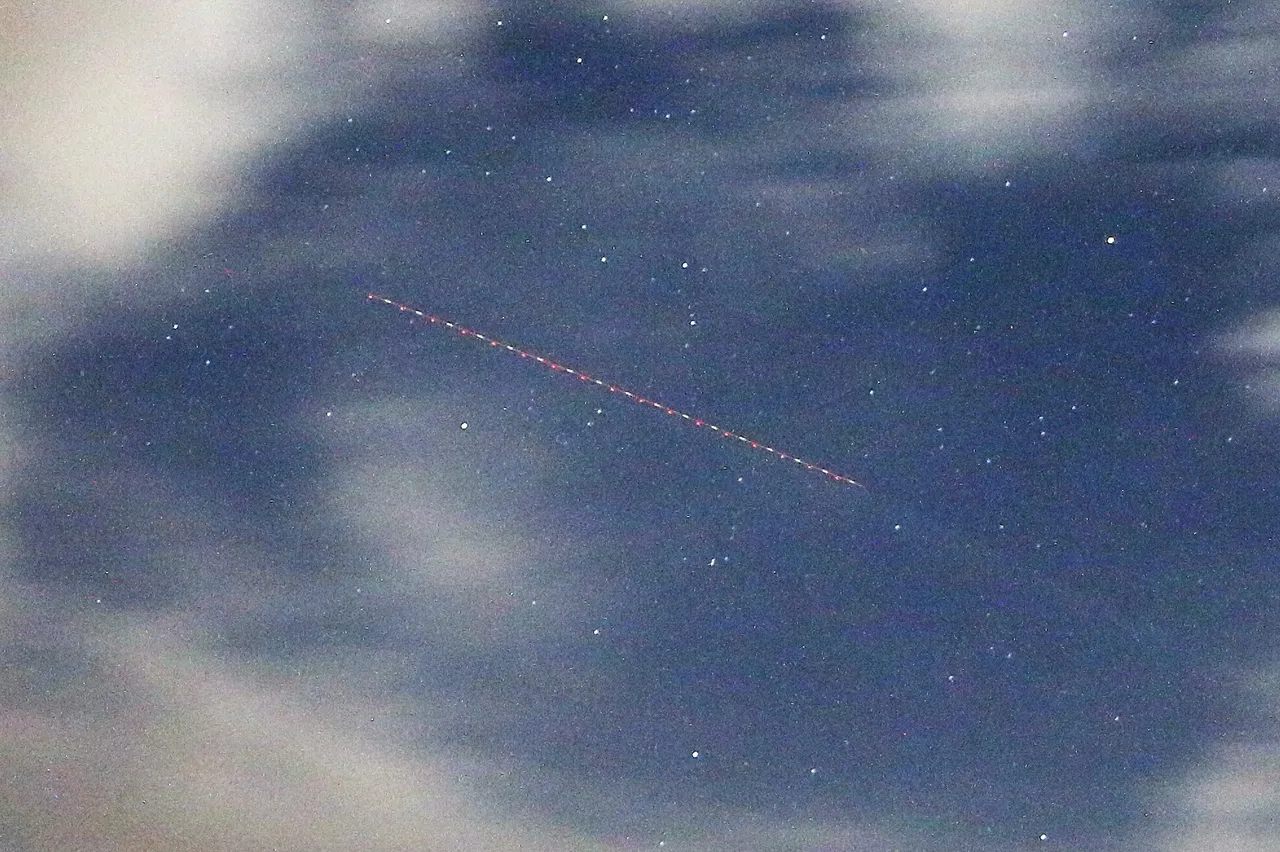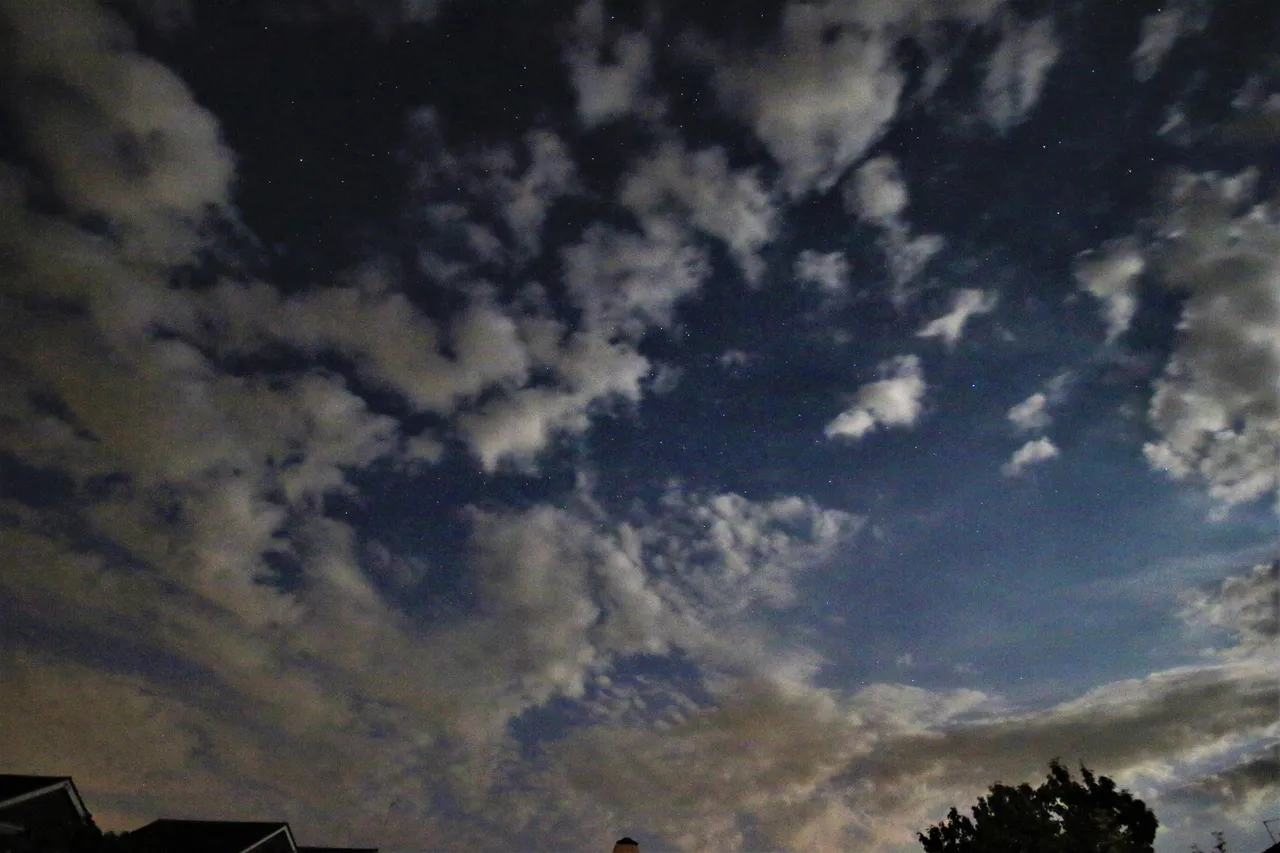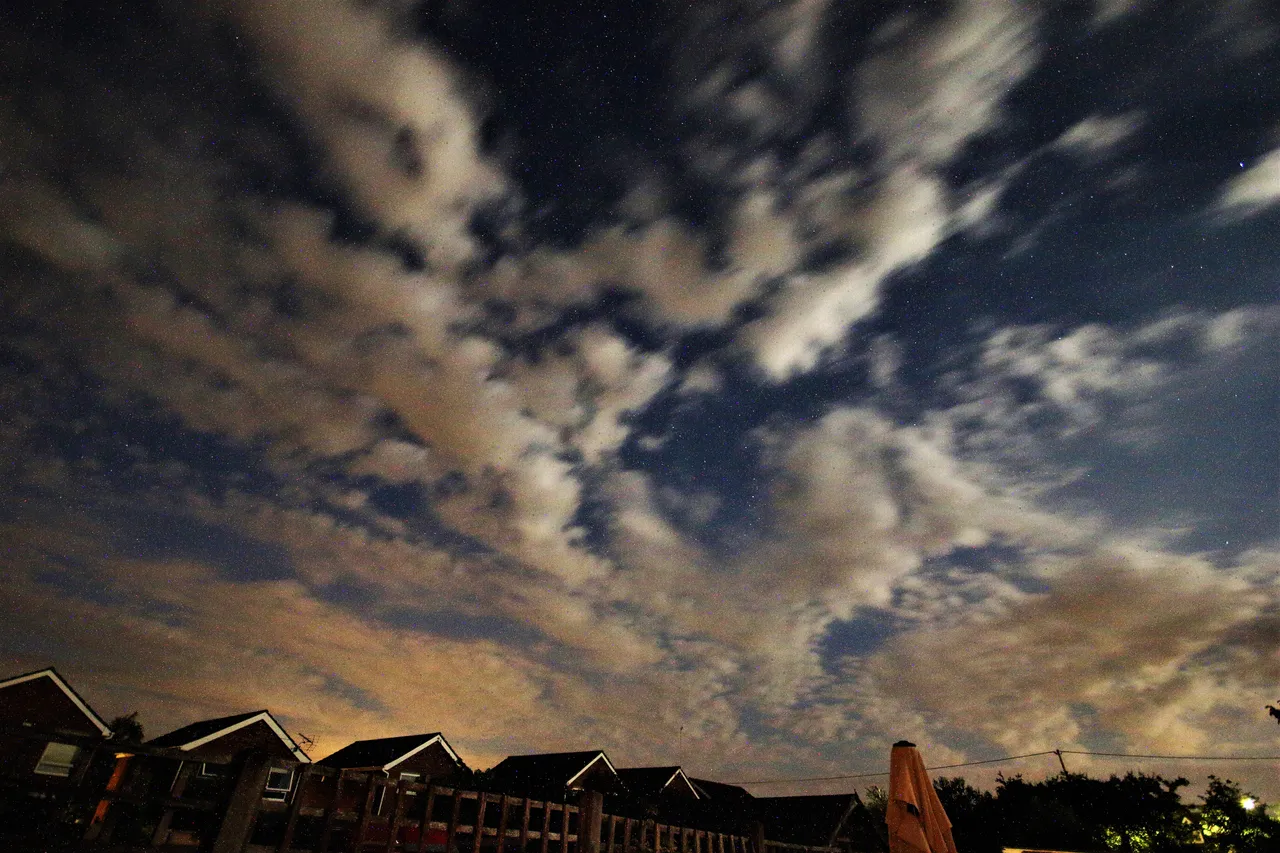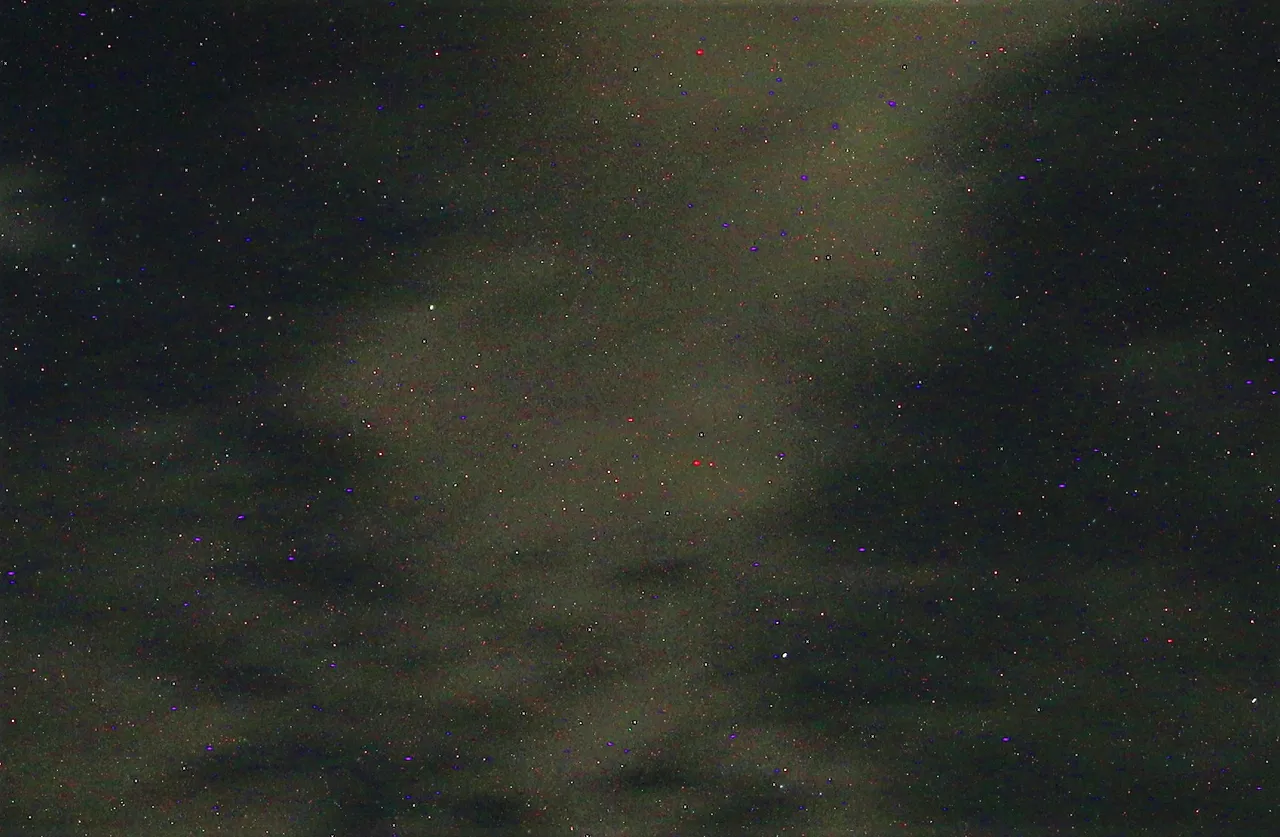Looking at the photographs below you would think that they were taken in the daytime. The image is as bright as day but it was taken after midnight at 12:30 a.m. with the aperture at f/5.6 and a long exposure of 18.6 seconds with the ISO set to 3200 using the Sigma 10-20 mm lens. To borrow the lyric from Dire Straits. 'I've been turning all the night time into the day!'
I got a bit excited as I thought I had captured another Perseid Meteoroid but it was not to be. It turned out to be an aeroplane. You can tell by the two distinct colours of light in the line of travel plus the angle was wrong.
I guess I must have just been lucky getting the previous photographs of the Perseid's as they are proving quite difficult to capture.

As you will see in the following photographs the cloud cover was patchy and covered the area that I was trying to photograph but the results were still quite interesting to me.

A lot of the light in these photos is coming from an almost full Moon off to the right of the images. The photo below looks like the dawn is about to break!

I also thought that I had spotted Mars, the red planet but on closer inspection it seems that it is a lens aberration as there are dozens of red planets or points of light in this image. It was also in the wrong part of the sky to be Mars...I think?

I will continue looking for the Perseid meteoroid shower but the cloud cover in the last week has been very challenging. And that is what I enjoy. If it was easy it wouldn't be worth doing and I wouldn't learn much.
As an exercise in astrophotogrpahy I learned a lot about the capabilities of the camera and the lens. If I hadn't told you. You may well have assumed that it was daytime. The presence of stars in the photos gives you the clue that it is actually night time. I had no idea that the camera was capable of capturing so much light. It is quite astonishing.
From these photographs I can see that there is much work to do on balancing the aperture, ISO and exposure time. These photos are over exposed so now I know what to do next time there is a break in the clouds.
"We learn wisdom from failure much more than from success. We often discover what will do, by finding out what will not do; and probably he who never made a mistake never made a discovery"
Samuel Smiles, The Lives of George and Robert Stephenson
Thanks for reading. Follow my journey into #astrophotography and my interests in science and nature. If you are not into these things don't follow me. I won't be offended. Follow what you enjoy. :)
My camera gear
EOS Canon 70D
Canon 50 mm 1.8 II lens
Sigma 30 mm lens
Sigma 20 mm lens
Pixel Shutter Cable Release
Travel tripod
Camera settings
Category (Astro photography)
Camera (Canon EOS 70D)
Exposure(range - 6 seconds to 20 seconds)
f Stop (f/5.6)
ISO (3200)
Lens (Canon 10-20 mm)